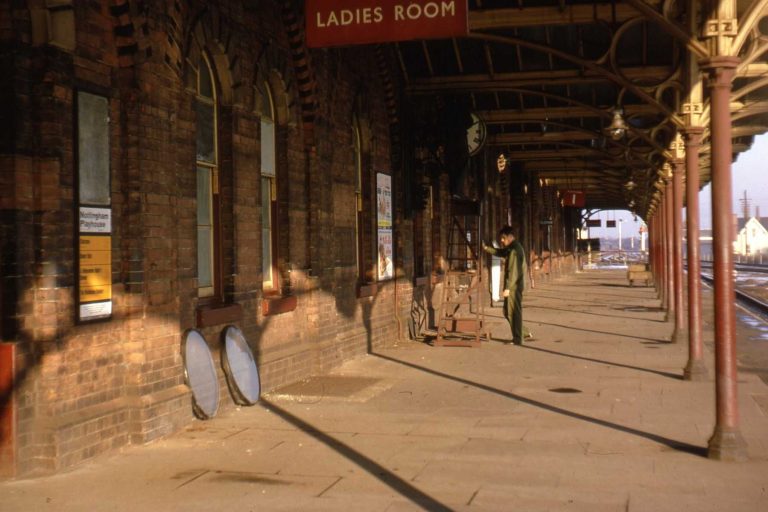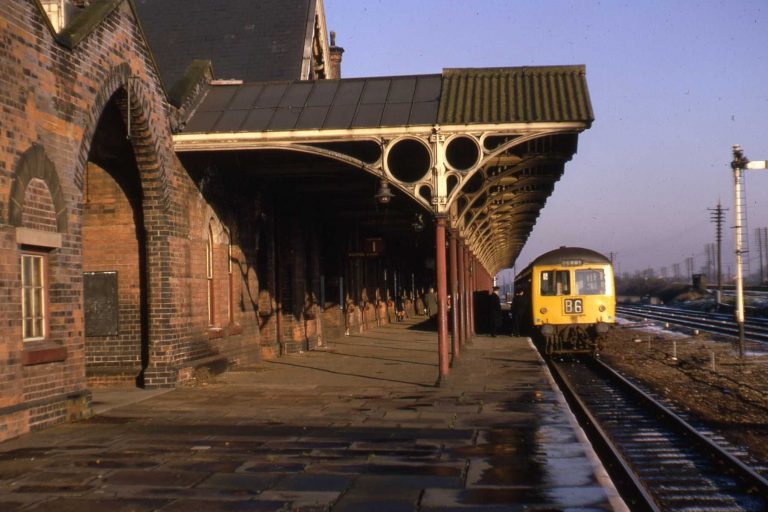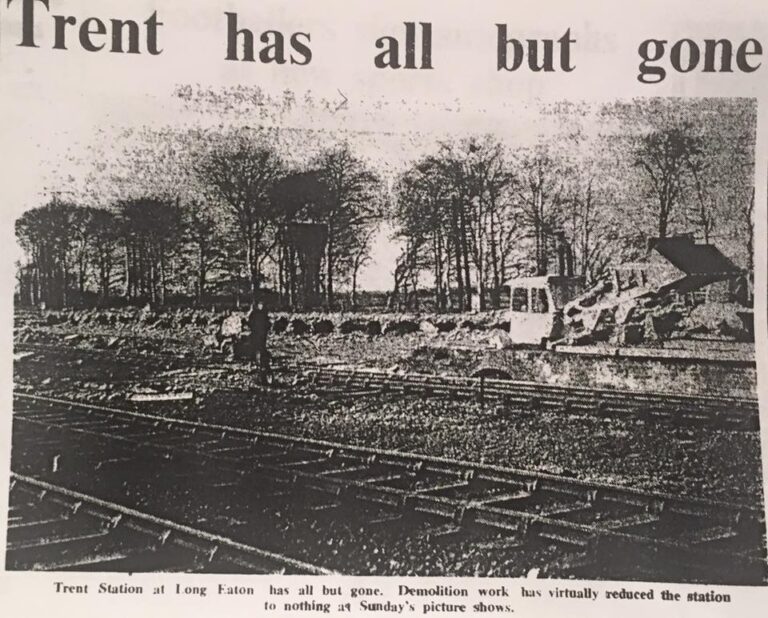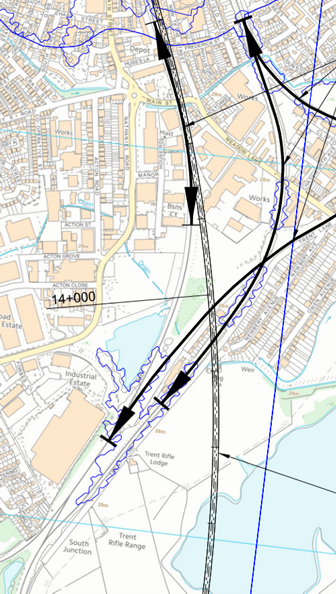

In 1923 the Midland Railway became part of the London, Midland and Scottish (LMS) Railway.
The LMS was nationalised in 1948 and became part of British Railways (renamed British Rail in 1965). The Rail Modernisation Plan of 1955 standardised station signs and called for steam locomotives to be phased out.
During the 1960s the nationalised system became increasingly expensive to run, especially the staffing costs. The 1963 Beeching report called for the closure of many stations, indeed many lines, to make the system more cost effective. Trent was one of the stations slated for closure.
It wasn’t until mid-1967 when the closure of Trent and 20 other Midland stations was approved by Barbara Castle, the Minister of Transport, that local opposition really took off. A residents’ action group formed, centred around Meadow Lane. Councillor Bill Camm was vice chair of Long Eaton Council and sent a telegram to Trevor Park MP, asking for the decision to be deferred. The plea was rejected by the Ministry.
The last full day of operation was 31 December 1967. The last train, a 3-coach diesel unit from Nottingham arrived at 1 minute past midnight and departed 2 minutes later. The station foreman was left to turn the gas lamps off.
In January 1968 Trevor Park launched an appeal to the parliamentary ombudsman, but by the time he adjudicated, the station had been demolished. The book has a series of photos showing the demolition. Poet laureate John Betjeman was one of those who deplored its demolition. By July 1968 the tracks through the site had been re-aligned and now hardly anything remains of Trent Station, apart from the top of the subway from Trent Lane.
The various signal boxes linked with Trent were replaced by a new power signal box, between the station site and Trent Cottages. The new automatic signal box cost £3 million (about £48 million in 2024 prices). The new facility, along with two more (Derby and Birmingham) replaced 176 traditional signal boxes.

The Stationmaster’s House and Trent Cottages survived and are still there, accessed through a bridge under the high-level goods line.

For a while the cottages were under threat from the Birmingham to Leeds section of High Speed 2 (HS2). The final route confirmed in 2017 had the HS2 line (the wide, hashed black line on the map) sweep across the Trent Valley and run on stilts 16m above the Erewash Valley line, through Long Eaton to the planned Derby / Nottingham station at Toton.
It would have run straight across the northern end of Trent Cottages.
This section was cancelled in 2021, with the East Midlands spur then due to terminate at East Midlands Parkway. In 2023, Phase 2 of HS2 was cancelled, including the whole East Midlands section.


Modern (2025) track network showing active signal settings and (black boxes) trains in Trent area.
Click here for the live version.
